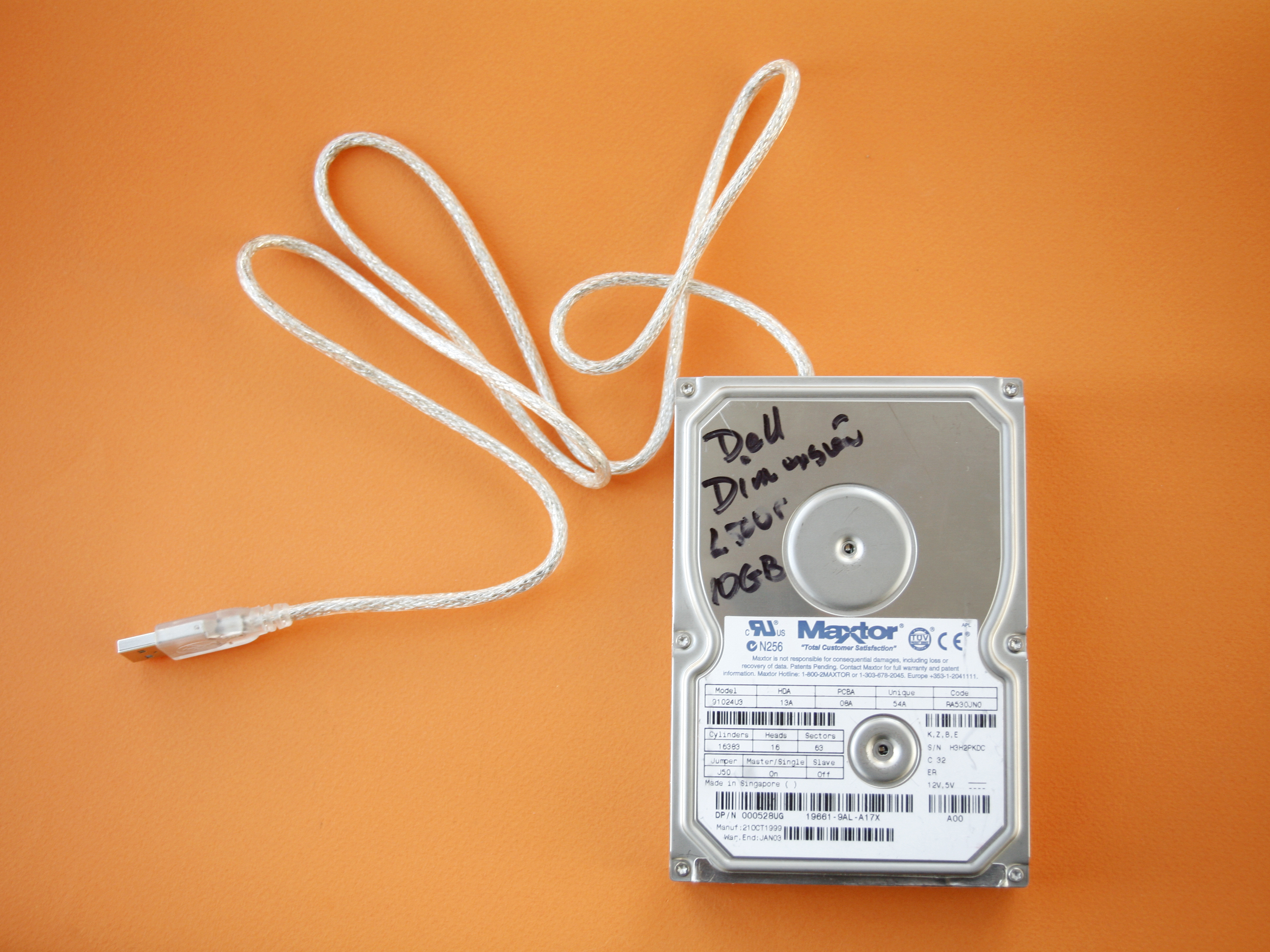I love mixing technologies to create an amalgam that looks like one thing but is actually something different. A case in point is the old hard drive that I stuffed full of flash memory. It looks like an internal drive, but it’s actually a solid-state memory peripheral that plugs in via USB. This makes it an instant conversation starter for anyone who ventures into my office.
Projects from Make: Magazine
Flash Memory Hard Disc
This fake hard drive stores more data and raises eyebrows.

Gut the hard drive.

The original drive stored 10GB, and by filling it with three 4GB memory sticks, I actually increased its capacity.
To start the conversion, I attacked the 3½”, 2-platter hard disk drive. Using a T9 Torx screwdriver, I unscrewed about a dozen screws from the case. Then I tore out the guts and cleared out space to make room for the flash drives and their cables.
You can use a large screwdriver to pry loose the magnets. Any molded nubs or mounting studs inside you can break off with pliers and grind flat with a Dremel and an abrasive wheel.
Mount the USB hub board.

With the drive’s case empty, I lined it all around with insulating tape, to prevent shorts. Next, I pried the USB hub’s case apart and found a way to fit its board inside the drive case. I then drilled a hole in one end of the case, at the edge next to the lid, making it just big enough to tuck the external USB cable down into.
Stuff it all in.

Finally, it was time for the main event. I removed the flash drives from their cases, used USB cables to connect them to the hub, and packed everything into the hard drive case. It was a tight fit, but there was enough room.
I then threaded the external cable out through its hole, screwed the hard drive’s lid back down, and plugged the cable into a computer to make sure that my handiwork actually worked.
Configure 3 drives as 1.

All 3 drives responded, so there was one more thing to do. Rather than having to deal with 3 separate drive letters, I navigated Windows to combine them into a single letter. To accomplish this, start at the Disk Management page, and convert each drive into a “Dynamic Disk.” This isn’t hard, but it’s tedious and confusing.
Now the 3 drives act like a single disk that gives me a place to stash my most precious digital possessions. I took an old disk drive, and in a flash I converted it into a solid-state “drive” that holds more data and runs faster than the original. You can teach an old drive new tricks!
Conclusion
This project first appeared in MAKE Volume 17, page 159.






